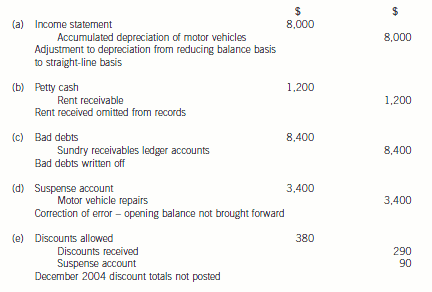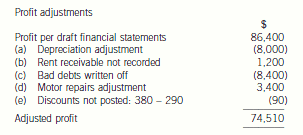河南省考生注意:2020年ACCA国际会计师考试报名时间!
发布时间:2020-01-10
想要报考2020年ACCA考试的考生要抓紧时间报名了哦!51题库考试学习网帮助大家汇总了ACCA官网上发布的2020年所有报名时间的内容,看看你还有多少备考的时间呢?温馨提示大家,ACCA考试前两个周会发布准考证打印通道,因此建议大家注意相关打印准考证的时间哟,提前打印和准备相关考试材料,以防出现不必要的麻烦导致未能参加考试。
2020年3月ACCA考试报名时间报名周期
提前报名截止 2019年11月11日
常规报名截止 2020年1月27日
后期报名截止 2020年2月3日
2020年6月ACCA考试报名时间报名周期
提前报名截止 2020年2月10日
常规报名截止 2020年4月27日
后期报名截止 2020年5月4日
2020年9月ACCA考试报名时间报名周期
提前报名截止 2020年5月11日
常规报名截止: 2020年7月27日
后期报名截止 2020年8月3日
2020年12月ACCA考试报名时间报名周期
提前报名截止 2020年8月10日
常规报名截止 2020年10月26日
后期报名截止 2020年11月2日
最后,告诉一个大家省钱的小妙招,ACCA考试出具了相关规定,就是报名费用的多少与考生时间的前后是有关系的,意思是你在提前报名阶段报名的考试报名费用就是最便宜的。相反,你在后期报名阶段报名的话,费用也就越高。所以,51题库考试学习网建议各位考生谨慎考虑自己是否需要考取ACCA证书,一旦决定下来了就尽快报名。
下面小编为大家准备了 ACCA考试 的相关考题,供大家学习参考。
(c) Calculate the theoretical ex rights price per share and the net funds to be raised by the rights issue, and
determine and discuss the likely effect of the proposed expansion on:
(i) the current share price of Merton plc;
(ii) the gearing of the company.
Assume that the price–earnings ratio of Merton plc remains unchanged at 12 times. (11 marks)
(c) Rights issue price = 2·45 x 0·8 = £1·96
Theoretical ex rights price = ((2 x 2·45) + (1 x 1·96))/3 = 6·86/3 = £2·29
New shares issued = 20m x 1/2 = 10 million
Funds raised = 1·96 x 10m = £19·6 million
After issue costs of £300,000 funds raised will be £19·3 million
Annual after-tax return generated by these funds = 19·3 x 0·09 = £1,737,000
New earnings of Merton plc = 1,737,000 + 4,500,000 = £6,237,000
New number of shares = 20m + 10m = 30 million
New earnings per share = 100 x 6,237,000/30,000,000 = 20·79 pence
New share price = 20·79 x 12 = £2·49
The weaknesses in this estimate are that the predicted return on investment of 9% may or may not be achieved: the priceearnings
ratio depends on the post investment share price, rather than the post investment share price depending on the
price-earnings ratio; the current earnings seem to be declining and this share price estimate assumes they remain constant;
in fact current earnings are likely to decline because the overdraft and annual interest are increasing but operating profit is
falling.
Expected gearing = 38/(60 + 19·3) = 47·9% compared to current gearing of 63%.
Including the overdraft, expected gearing = 46/(60 + 19·3) = 58% compared to 77%.
The gearing is predictably lower, but if the overdraft is included in the calculation the gearing of the company is still higher
than the sector average. The positive effect on financial risk could have a positive effect on the company’s share price, but
this is by no means certain.
(c) Discuss the difficulties that may be experienced by a small company which is seeking to obtain additional
funding to finance an expansion of business operations. (8 marks)
(c) Small businesses face a number of well-documented problems when seeking to raise additional finance. These problems have
been extensively discussed and governments regularly make initiatives seeking to address these problems.
Risk and security
Investors are less willing to offer finance to small companies as they are seen as inherently more risky than large companies.
Small companies obtaining debt finance usually use overdrafts or loans from banks, which require security to reduce the level
of risk associated with the debt finance. Since small companies are likely to possess little by way of assets to offer as security,
banks usually require a personal guarantee instead, and this limits the amount of finance available.
Marketability of ordinary shares
The equity issued by small companies is difficult to buy and sell, and sales are usually on a matched bargain basis, which
means that a shareholder wishing to sell has to wait until an investor wishes to buy. There is no financial intermediary willing
to buy the shares and hold them until a buyer comes along, so selling shares in a small company can potentially take a long
time. This lack of marketability reduces the price that a buyer is willing to pay for the shares. Investors in small company
shares have traditionally looked to a flotation, for example on the UK Alternative Investment Market, as a way of realising their
investment, but this has become increasingly expensive. Small companies are likely to be very limited in their ability to offer
new equity to anyone other than family and friends.
Tax considerations
Individuals with cash to invest may be encouraged by the tax system to invest in large institutional investors rather than small
companies, for example by tax incentives offered on contributions to pension funds. These institutional investors themselves
usually invest in larger companies, such as stock-exchange listed companies, in order to maintain what they see as an
acceptable risk profile, and in order to ensure a steady stream of income to meet ongoing liabilities. This tax effect reduces
the potential flow of funds to small companies.
Cost
Since small companies are seen as riskier than large companies, the cost of the finance they are offered is proportionately
higher. Overdrafts and bank loans will be offered to them on less favourable terms and at more demanding interest rates than
debt offered to larger companies. Equity investors will expect higher returns, if not in the form. of dividends then in the form
of capital appreciation over the life of their investment.
2 The draft financial statements of Choctaw, a limited liability company, for the year ended 31 December 2004 showed
a profit of $86,400. The trial balance did not balance, and a suspense account with a credit balance of $3,310 was
included in the balance sheet.
In subsequent checking the following errors were found:
(a) Depreciation of motor vehicles at 25 per cent was calculated for the year ended 31 December 2004 on the
reducing balance basis, and should have been calculated on the straight-line basis at 25 per cent.
Relevant figures:
Cost of motor vehicles $120,000, net book value at 1 January 2004, $88,000
(b) Rent received from subletting part of the office accommodation $1,200 had been put into the petty cash box.
No receivable balance had been recognised when the rent fell due and no entries had been made in the petty
cash book or elsewhere for it. The petty cash float in the trial balance is the amount according to the records,
which is $1,200 less than the actual balance in the box.
(c) Bad debts totalling $8,400 are to be written off.
(d) The opening accrual on the motor repairs account of $3,400, representing repair bills due but not paid at
31 December 2003, had not been brought down at 1 January 2004.
(e) The cash discount totals for December 2004 had not been posted to the discount accounts in the nominal ledger.
The figures were:
$
Discount allowed 380
Discount received 290
After the necessary entries, the suspense account balanced.
Required:
Prepare journal entries, with narratives, to correct the errors found, and prepare a statement showing the
necessary adjustments to the profit.
(10 marks)


(b) On 1 April 2004 Volcan introduced a ‘reward scheme’ for its customers. The main elements of the reward
scheme include the awarding of a ‘store point’ to customers’ loyalty cards for every $1 spent, with extra points
being given for the purchase of each week’s special offers. Customers who hold a loyalty card can convert their
points into cash discounts against future purchases on the basis of $1 per 100 points. (6 marks)
Required:
For each of the above issues:
(i) comment on the matters that you should consider; and
(ii) state the audit evidence that you should expect to find,
in undertaking your review of the audit working papers and financial statements of Volcan for the year ended
31 March 2005.
NOTE: The mark allocation is shown against each of the three issues.
(b) Reward scheme
(i) Matters
■ If the entire year’s revenue ($303m) attracted store points then the cost of the reward scheme in the year is at
most $3·03m. This represents 1% of revenue, which is material to the income statement and very material
(31·9%) to profit before tax (PBT).
■ The proportion of customers who register for loyalty cards and the percentage of revenue (and profit) which they
represent (which may vary from store to store depending on customer profile).
■ In accordance with the assumption of accruals, which underlies the preparation and presentation of financial
statements (The Framework/IAS 1 ‘Presentation of Financial Statements’), the expense and liability should be
recognised as revenue is earned. (It is of the nature of a discount.)
■ Any restrictions on the terms for converting points (e.g. whether they expire if not used within a specified time).
■ To the extent that points have been awarded but not redeemed at 31 March 2005, Volcan will have a liability at
the balance sheet date.
■ Agree the total balance due to customers at the year end under the reward scheme to the sum of the points on
individual customer reward cards.
■ The proportion of reward points awarded which are not expected to be claimed (e.g. the ‘take up’ of points awarded
may be only 80%, say).
■ Whether reward points are valued at selling price or cost. For example, if the average gross profit margin is 20%,
one point is equivalent to 0·8 cents of goods at cost.
(ii) Audit evidence
■ New/updated systems documentation explaining how:
– loyalty cards (and numbers) are issued to customers;
– points earned are recorded at the point of sale; and
– points are later redeemed on subsequent purchases.
■ Walk-through tests (e.g. on registering customer applications and issuing loyalty cards, awarding of points on
special offer items).
■ Tests of controls supporting the extent to which audit reliance is placed on the accounting and internal control
system. In particular, how points are extracted from the electronic tills (cash registers) and summarised into the
weekly/monthly financial data for each store which underlies the financial statements.
■ Analytical procedures on the value of points awarded by store per month with explanations of variations (‘variation
analysis’). For example, similar proportions (not exceeding 1% of revenue) of points in each month might be
expected by store – possibly increasing following any promotion of the ‘loyalty’ scheme.
Tutorial note: Within a close community, for example, a high proportion of customers might be expected to sign
up for the reward scheme. However, in big cities, where a large proportion of the customers might be transitory
(e.g. tourists or other visitors) the proportion may be much lower.
■ Tests of detail on a sample of transactions with customers undertaken at store visits. For example, for a sample of
copy till receipts:
– check the arithmetic accuracy of points awarded (1 per $1 spent + special offers);
– agree points awarded for special offers to that week’s special offers;
– for cash discounts taken confirm the conversion of points is against the opening balance of points awarded
(not against purchases just made).
声明:本文内容由互联网用户自发贡献自行上传,本网站不拥有所有权,未作人工编辑处理,也不承担相关法律责任。如果您发现有涉嫌版权的内容,欢迎发送邮件至:contact@51tk.com 进行举报,并提供相关证据,工作人员会在5个工作日内联系你,一经查实,本站将立刻删除涉嫌侵权内容。
- 2020-01-09
- 2021-01-13
- 2020-01-10
- 2021-01-13
- 2020-05-20
- 2020-01-09
- 2020-01-09
- 2021-09-18
- 2020-01-09
- 2021-04-04
- 2021-01-13
- 2020-05-21
- 2020-01-10
- 2020-09-03
- 2020-09-04
- 2020-01-09
- 2020-02-28
- 2020-01-08
- 2020-01-09
- 2019-12-29
- 2020-01-10
- 2020-01-09
- 2021-01-13
- 2021-04-25
- 2020-02-22
- 2020-01-03
- 2020-01-08
- 2020-08-12
- 2020-01-10
- 2020-01-10